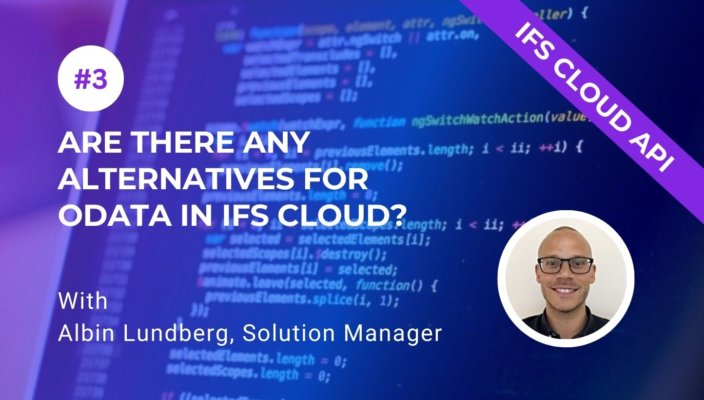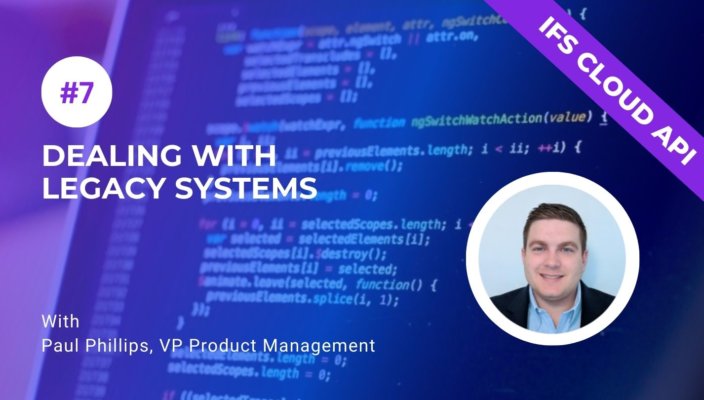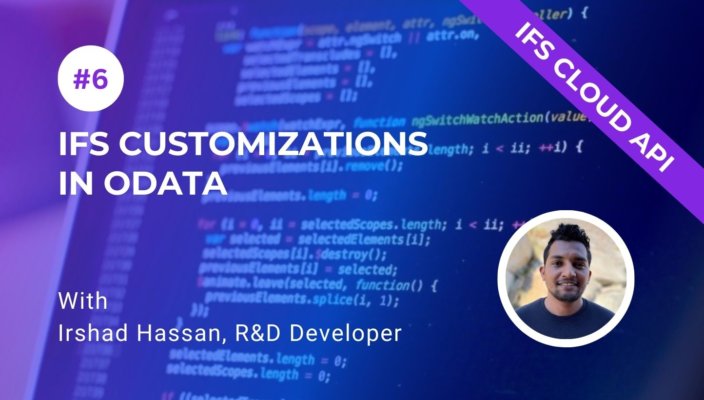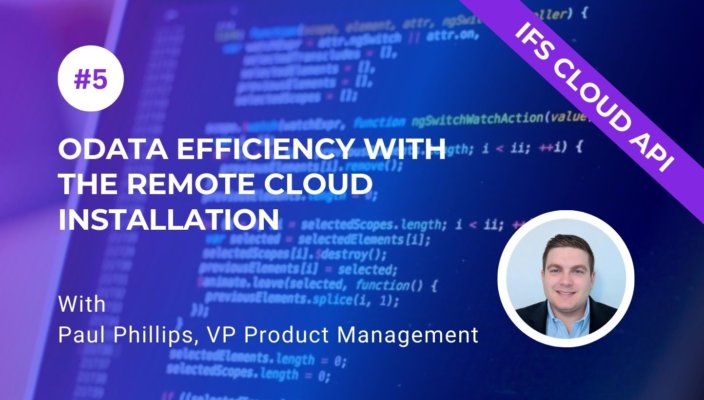
With the latest release of Novacura Flow, version 6.14, the first version of the IFS OData connector was also released. The IFS OData connector, built specifically for IFS Cloud, makes it possible to create workflows using the OData projections from IFS Cloud without writing code.
IFS OData Connector
The IFS OData connector works with the IFS Cloud OData provider to utilize the RESTful web services that IFS Cloud uses to communicate with their cloud instances. You can add any projection you would like to the IFS OData connector with just a click of a button.
We believe that connecting to IFS should be as easy as possible. The OData connector from Novacura Flow takes the guesswork out of connecting to the systems you need – and without the need for code. It eliminates the gaps from using a standard OData connector by presenting a directory of projections & end-points available in IFS Cloud. So, instead of guessing the right projection name, the connector helps developers choose the appropriate one by picking it from a list.

Moreover, the connector controls all the parameters required by the API end-points (both inputs and outputs). Thanks to that, developers unfamiliar with the all-new IFS OData API don’t have to review the extensive API documentation. It is very advantageous, especially when IFS Cloud offers over 6,000 projections! As a result, developers can prepare integration steps way faster than if they had to write conventional lines of code. Moreover, the connector controls the proper usage of the end-point (even before the first real test), so the created integration is more stable from the beginning.

What are the capabilities of the IFS OData connector?
The IFS OData connector, available with Novacura Flow 6.14, makes it easier to perform common OData operations like select, filter, sort, join, count, skip & top. The connector also:
- Shows a list of values for Enumeration fields
- Supports CRUD operations in a no-code way
- Supports IFS Custom Objects
- Handles Media/Documents (available in an upcoming version)
- Handles collections inside an entity
- Supports Authorization code flow and token exchange from IFS IDP
- Supports Impersonation
- Handles IFS errors, exceptions in 200 responses
Embedded Efficiency
Our OData Connector also helps optimize data queries by forcing data filtering conditions (“where” clause). The where clause can be built without code in the “Where” criteria designer. The OData Connector offers some helpful facilitation here. When creating conditions in the “Where” section, a designer can use the “IN” operator to check whether a particular variable exists for the specific list of values. It is also a very practical extension to the standard OData API offered by IFS Cloud, which doesn’t natively support this keyword yet! We developed it because we believe it may improve development efficiency in specific situations.
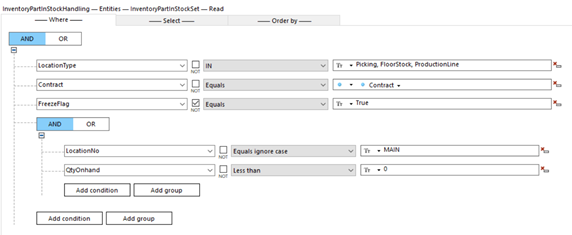
The OData Connector capabilities don’t concentrate only on development efficiency. Our connector also offers some beneficial functions that will dramatically impact the runtime efficiency.
When configuring “Read” end-point usage, the developer can decide how many rows should be read per operation. That way, data can be read in portions (i.e., by 100 records) and at the proper time. Moreover, this records amount limit can be treated as a safety precaution when a developer doesn’t know how big the original data source is. This option significantly impacts performance since it prevents the developer from reading 100,000 records at once!
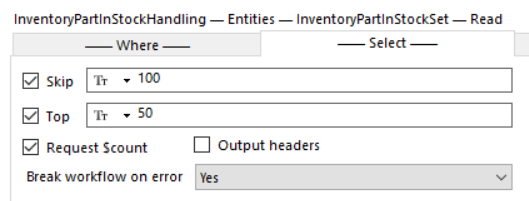
In the near future, Novacura will deliver another improvement to the OData connector – the “Group” function. It will enable aggregate functions (like “Sum” or “Average”) that can be executed on the server-side. Flow Server will no longer need to read all the records to count them on the Flow side – all the records will be counted on IFS Server side.
How about custom projections of custom fields?
As mentioned above, Novacura Flow OData Connector presents the whole directory of IFS Cloud projections and end-points. And what is especially important is that the directory is prepared dynamically by the Novacura OData Configurator. Consequently, all new projections can be displayed in the Connector directory.
This feature applies to any custom projections created exclusively for that particular IFS Cloud installation. Moreover, this dynamic reconfiguration also refers to all input/output parameters required by the projection’s end-point. Therefore, if the end-point requires a new parameter (i.e., added as a custom parameter), the connector will identify it and require it.
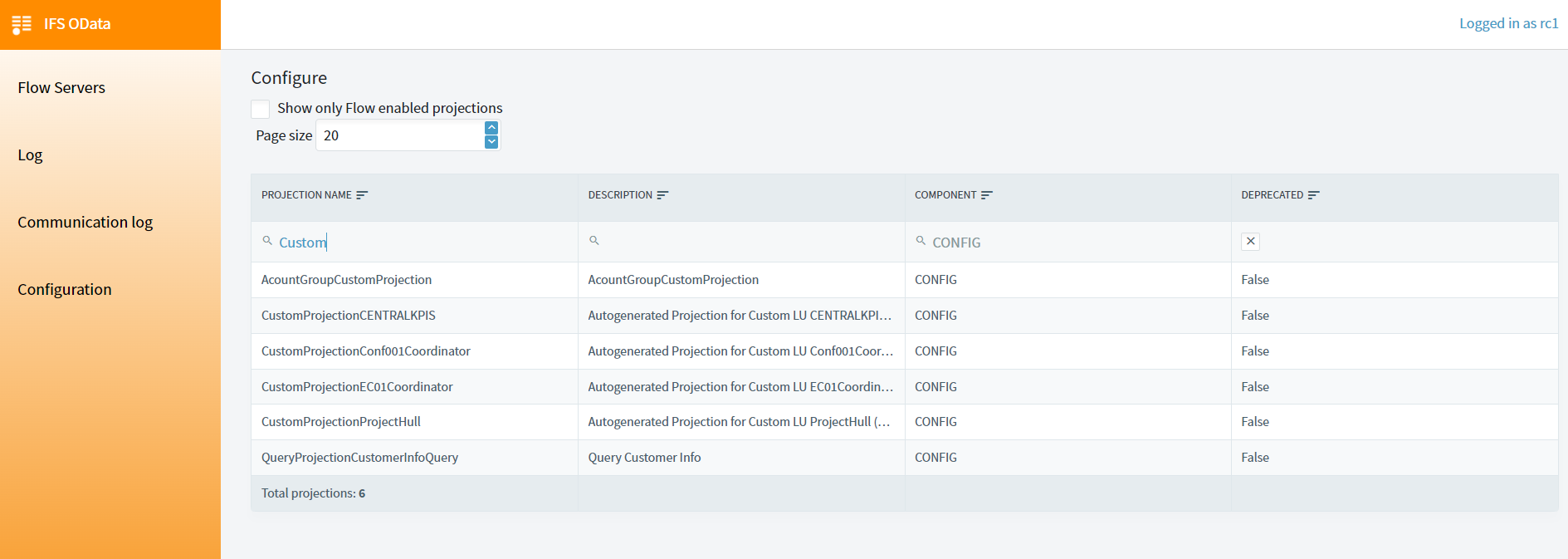
What are the benefits of using the IFS OData connector?
At Novacura, we want to empower IFS customers with all the necessary tools to help them migrate from IFS Applications to IFS Cloud – the inevitable future. We don’t want IFS customers to get lost in translation when moving from the conventional PL/SQL API to the OData API. So we put a lot of attention into providing tools that will help them go through this process as seamlessly as possible. Therefore, we provide (and will develop) our IFS OData connector.
The key benefits:
- Easier migration from IFS Applications to IFS Cloud – lower the competency threshold needed for your application developers by creating applications without the need for code using IFS projections and API trees.
- More efficient integration development process – with the OData Connector, you can propose all the necessary projections of IFS API; the developer simply picks methods from the directory without needing to study the extensive documentation.
- Fewer problems in the integration – new OData API calls are controlled by the OData Connector at the development time (syntax checking).
- Better runtime efficiency (performance) – our OData Connector controls how information is read from IFS and prevents developers from reading massive amounts of data.





